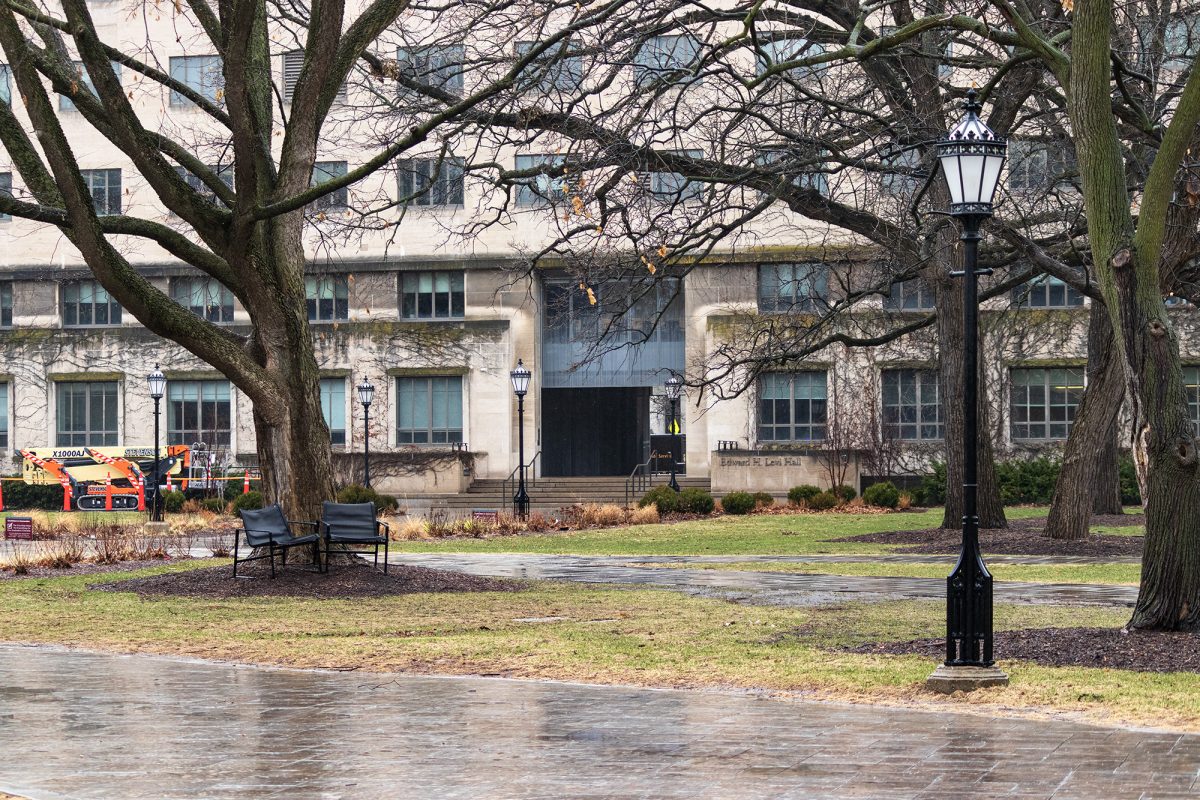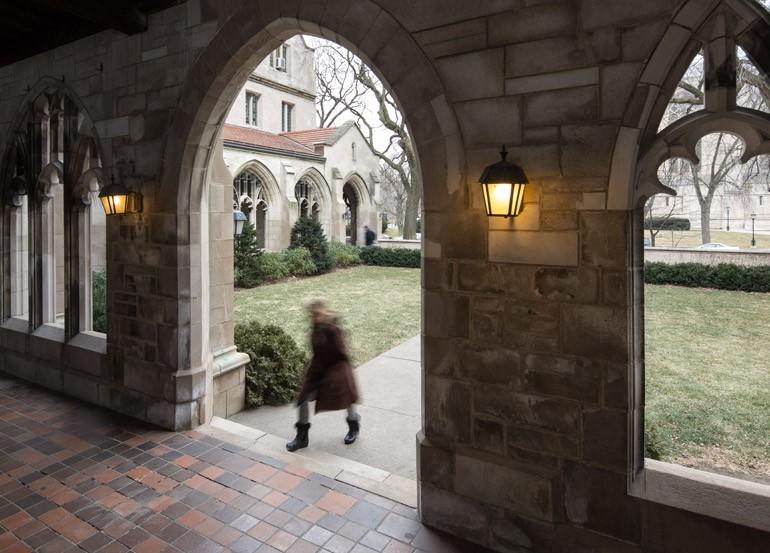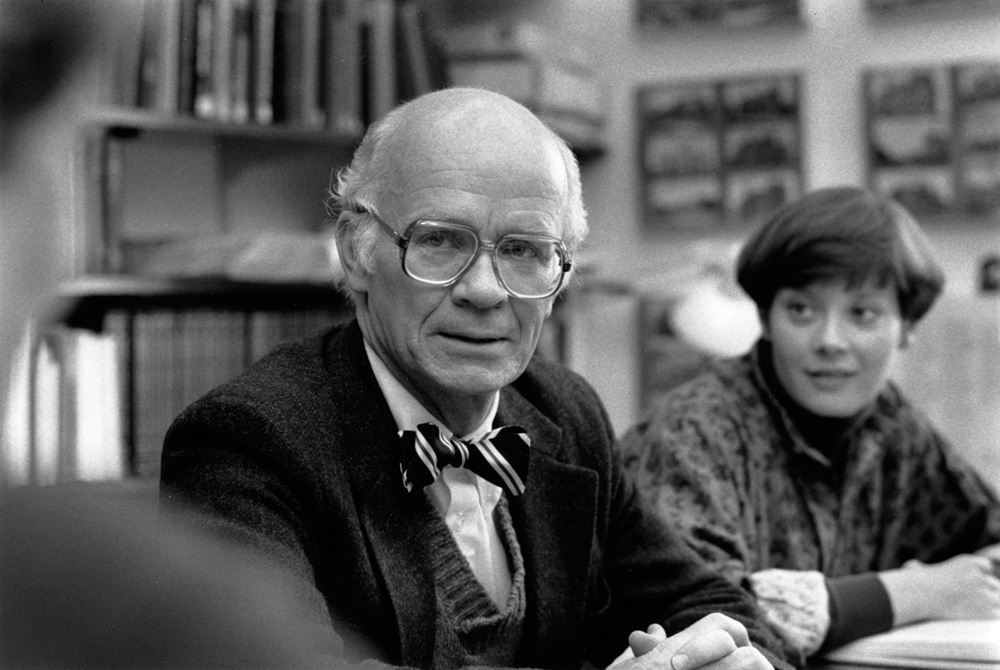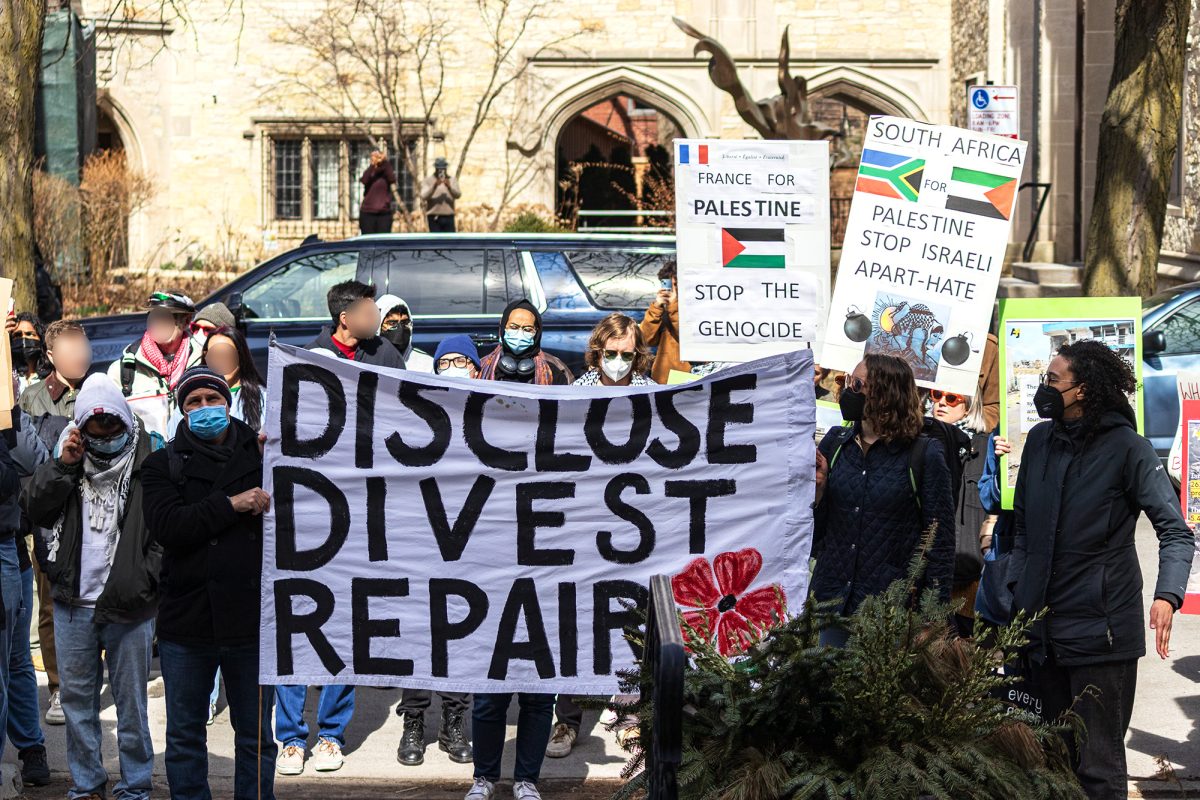In 1962, Hans Morsbach (MBA ‘61) purchased the Medici restaurant, one of Hyde Park’s most popular eateries. Since then, he has written a book on forestry, opened up a woodworking shop, become a prominent Hyde Park activist, and even written op-ed pieces for the New York Times. Fresh from an appointment with his acupuncturist, Morsbach sat down in a back booth at the Med to discuss his wide-ranging interests.
CM : How did you first become involved in the restaurant industry?
Hans Morsbach: I had gotten a college degree and had started to work for corporate enterprises that didn’t do well. By chance on a morning walk in Hyde Park, there was a sign that the Medici was for sale. I bought it for like a thousand dollars.
CM: The Medici has become something of a Hyde Park institution. Why do you think it has remained so successful in an industry that sees restaurants come and go?
HM: Management is one thing. I love owning the Medici. It is highly regarded in the community and I love coming here. The food is good, the people are happy, and the employees are happy. It’s just a pleasure to own it.
CM: How did the tradition of customers leaving graffiti on the tables first start?
HM: It was not by design, let me tell you that. It just kind of happened, and we discourage it as much as we can. But some people just take out their magic markers as you can see. If the carvings go too deep, I have to patch the wood, I do that myself. The graffiti used to be better then it is now, I think…. It used to be cleverer.
CM: In 1972, you purchased a farm in Wisconsin. What led to the transition from the South Side of Chicago to a farm in Wisconsin?
HM: One of the Medici customers owned that farm in Wisconsin; she said do “you want to buy it?” So, I just bought it.
CM: And it was there that your interest in forestry began?
HM: Well, the forestry, I always liked nature and my mother was a good gardener and taught me a lot. I really didn’t know much about forestry at all. What happened was some foresters from the state talked me into planting a bunch of walnut trees. At first, it was a disaster. That is what my book is all about (Common Sense Forestry). And I’m proud to say my book is the bestselling one on forestry on Amazon.
CM: In addition to writing the book and owning a restaurant you have also started a woodcrafts company—Shima Woodcraft—which cleverly enough is Amish spelled backwards. How did that begin?
HM: In one of my restaurants, I employed a carpenter from Wisconsin. He made most of the tables here, and I began to help him out. In the process, I became a decent carpenter…. I have Amish neighbors. It’s Amish country there and many are good carpenters. I got involved with two Amish and started messing around. We make beautiful stuff and I am very proud of it.
CM: In addition to your work in forestry, woodworking, and the restaurant industry, you are also very active in Hyde Park causes. You have participated in everything from the Save the Point campaign to various redevelopment issues. Why are neighborhood causes so important to you?
HM: I am a troublemaker. I think some issues are just important to me, like Save the Point. I was very emotional about it. I was shocked that the University would side with destroying the limestone ambiance of the point; I still don’t understand why they did it. I was also shocked that the city, the University, and a lot of the conservative Hyde Parkers were fighting the issue, which has tremendous popularity with many people. And I think we won the battle. We won it with the help of Barack Obama and Bobby Rush.
CM: What are your opinions about the University’s role in the redevelopment of Hyde Park?
HM: Let me just say that I have tremendous respect for the University academically and I have employed University students for 45 years. When it comes to the impact on the community I have severe problems with it. For one thing, the Medici was never very highly esteemed from the University’s point of view. The university has been actively engaged in preventing the Medici from being on this location…. The University was very upset when I moved here. There were petitions that the Medici shouldn’t be here at this current location in 1989. (Morsbach later added by e-mail that the gargoyle on the left side of the entrance is an obvious likeness of former University president Hanna Gray: “I decided to incorporate her face into the façade after her staff inundated City Hall trying to prevent the Medici’s existence in that location. The construction was in progress at the time and a failure to open the restaurant would have been financially disastrous.”) But I make a big distinction between the University academically and business-wise. I went to the Graduate School of Business; my daughter went to the Lab School…I think that academically, it is fantastic.
CM: How do you think your time at the GSB contributed to your success?
HM: Well, maybe if I would have taken a minor in diplomacy I would have done better.
CM: Next month you will be opening a new Medici in Normal, Illinois.
HM: I am an old fart and just before I call it quits I want to have a place that is my dream place. And Normal is my dream place. It’s beautiful and it’s huge. It’s well located in a community where they appreciate me…I was never so positive of any investment I ever made. By the way, the architect used to be a waiter here…. The main reason is economics. We can have liquor, and it is in a good location close to Illinois State University, and we have good management and I am looking forward to that.









Fabian Morsbach / Sep 23, 2022 at 4:02 pm
Happy birthday, Hans!